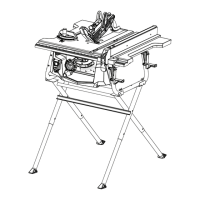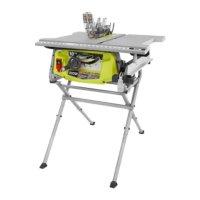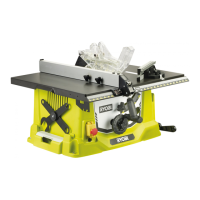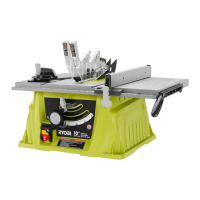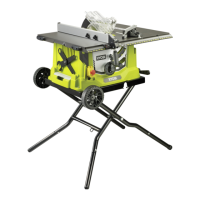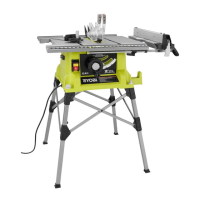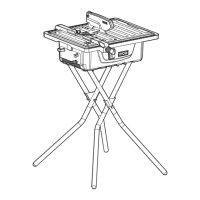SAVE THIS MANUAL FOR FUTURE REFERENCE
The saw has been engineered and manufactured to our high standard for dependability, ease of operation, and operator
safety. When properly cared for, it will give you years of rugged, trouble-free performance.
OPERATOR’S MANUAL
MANUEL D’UTILISATION
MANUAL DEL OPERADOR
10 in. TABLE SAW
SCIE À TABLE de 254 mm (10 po)
SIERRA DE MESA de 254 mm (10 pulg.)
RTS12
Cette scie a été conçue et fabriquée conformément aux strictes
normes de abilité, simplicité d’emploi et sécurité d’utilisation.
Correctement entretenu, cet outil vous donnera des années de
fonctionnement robuste et sans problème.
AVERTISSEMENT : Pour réduire les risques de
blessures, l’utilisateur doit lire et veiller à bien comprendre le
manuel d’utilisation avant d’employer ce produit.
Su sierra ha sido diseñado y fabricado de conformidad con nuestras
estrictas normas para brindar abilidad, facilidad de uso y seguridad
para el operador. Con el debido cuidado, le brindará muchos años
de sólido funcionamiento y sin problemas.
ADVERTENCIA: Para reducir el riesgo de lesiones,
el usuario debe leer y comprender el manual del operador antes
de usar este producto.
CONSERVER CE MANUEL POUR
FUTURE RÉFÉRENCE
GUARDE ESTE MANUAL PARA
FUTURAS CONSULTAS
WARNING: To reduce the risk of injury, the user must read and understand the operator’s manual before using
this product.
